A trove of Basquiat's little-seen work arrives in L.A. — a city pivotal to his artistic life
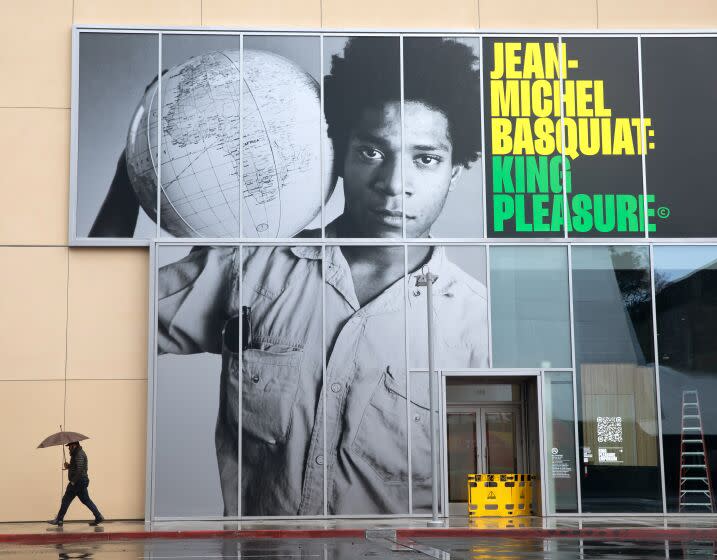
- Oops!Something went wrong.Please try again later.
- Oops!Something went wrong.Please try again later.
In the fall of 1982, Jean-Michel Basquiat was living at art dealer Larry Gagosian’s Venice Beach home, making swarms of new paintings in his private wing of the house. Gagosian had been “electrified” by the 21-year-old artist’s work at New York’s Annina Nosei Gallery about a year earlier. So he and Nosei collaborated on Basquiat’s first West Coast exhibition, at Larry Gagosian Gallery, in the spring of 1982 — after which Gagosian invited the artist to move into his Market Street house so he could create new paintings for a second L.A. show in 1983.
When he wasn’t working, Basquiat loved to shop for clothes at the high-end Maxfield Blue in what’s now West Hollywood. But the New York artist didn’t drive and Gagosian had temporarily lost his license, he says. So Basquiat’s girlfriend at the time, a not-yet-famous singer named Madonna, then visiting from New York, drove the three of them around town.
Basquiat bought expensive suits at Maxfield Blue, but he was so intent on getting back to painting that he often didn’t wait for the fashion boutique to finish tailoring them. He’d race home, pins still affixed to his new suit cuffs, and paint voraciously — still dressed in the suit. By the end of the day it was paint-splattered and ruined, as Gagosian recalls. But the works were incredible.
“He never stopped painting,” Gagosian says. “He was able to be very productive in Los Angeles.”
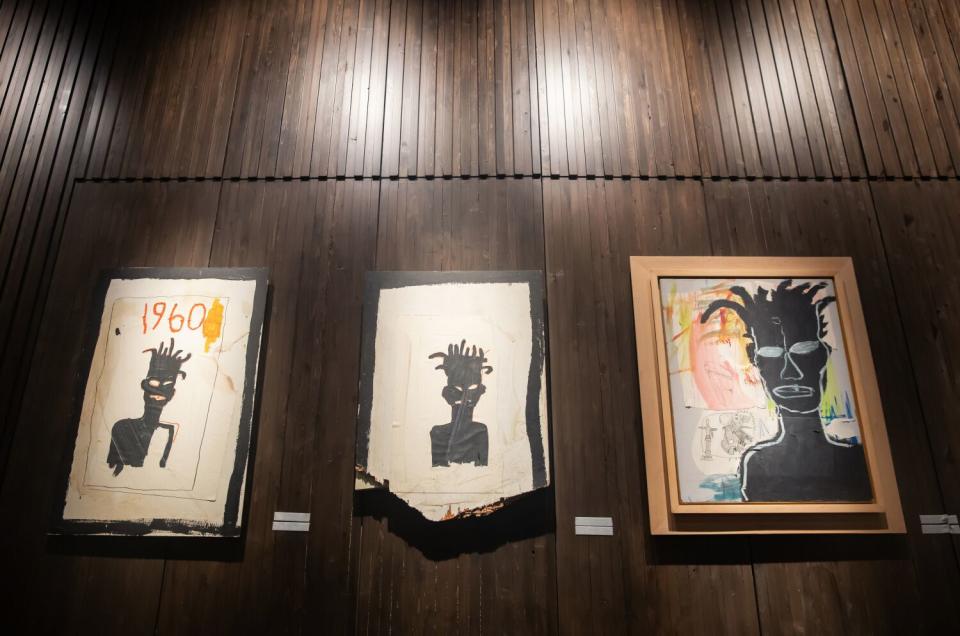
Basquiat is often thought of as a quintessential New York artist — and he was. He was born and raised in Brooklyn and worked at the intersection of Manhattan’s prolific, experimental ’80s-era arts scene and New York City street culture at the time. He died young, in 1988.
But Los Angeles was also pivotal to Basquiat's personal and artistic life. When the insular and sometimes critical New York art world became too much for Basquiat, whose friends and hangers-on would crowd his apartment at all hours of the day and night, he decamped to L.A. He spent about a year and a half living here for long stretches of time between 1982 and 1984 — at first with Gagosian at the Market Street house in Venice and then in a nearby studio he leased — and he produced about 100 paintings during that time.
“L.A. was a place for him to be by the ocean and just paint,” says his sister Lisane Basquiat. “He loved L.A. I think it calmed him.”
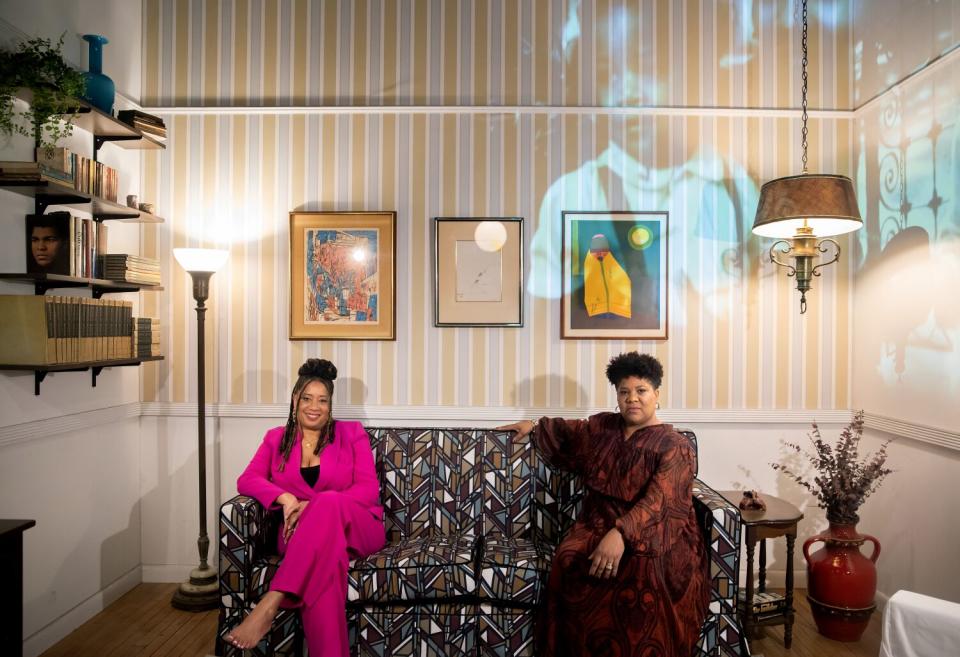
A new exhibition opening this week draws connections between Basquiat and L.A. while also offering an intimate and nuanced portrait of the artist, his work and his life through the lens of his family.
“Jean-Michel Basquiat: King Pleasure” opens to the public Friday in four cavernous gallery spaces at downtown's Frank Gehry-designed Grand LA. The exhibition, which debuted in New York in April, was curated and executive produced by the late artist’s sisters, Lisane Basquiat and Jeanine Heriveaux, now 58 and 55, respectively. Their 85-year-old stepmother, Nora Fitzpatrick, helped organize the show and it was co-produced by ISG Productions’ Ileen Gallagher.
Since 2013, when their father Gerard Basquiat passed away, Lisane and Jeanine have run the Basquiat estate. They spent about five years digging through their brother’s artworks and personal effects — paintings and drawings, but also clothing, notebooks, dinner china, travel souvenirs — to produce the exhibition. The goal: to show from their point of view who their brother really was.
“What people don’t always realize,” Lisane says during a walk-through of the exhibition, “is that he wasn’t just this dude who sprung up from the streets, like his story began when he left home. He actually came from a family. And there was a lot of love in our home.”
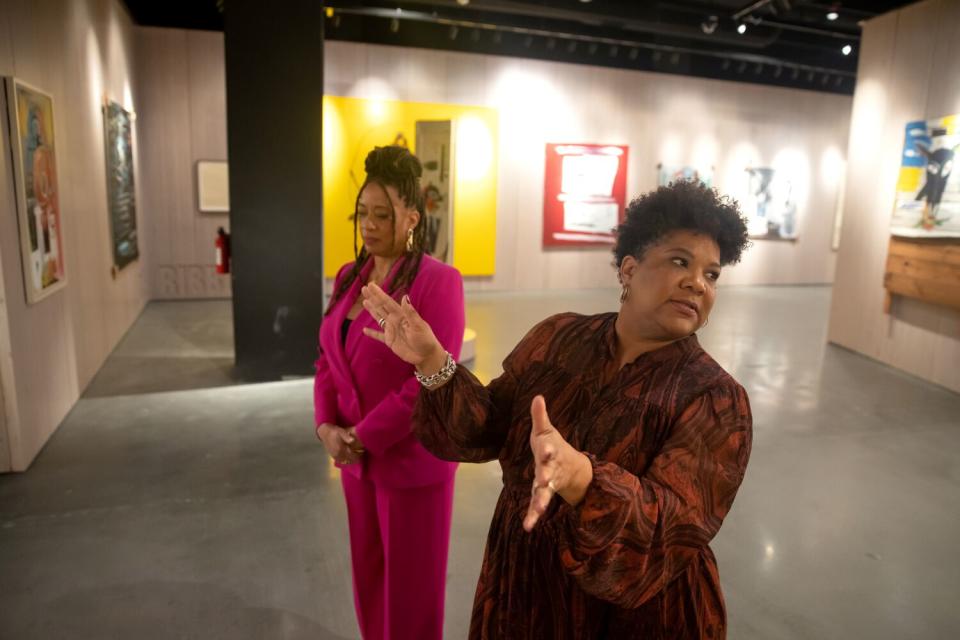
The exhibition includes about 200 works from the artist’s estate, much of which has never been shown publicly before “King Pleasure.” One section of the show, called “1960,” includes Basquiat’s framed birth announcement and his hand-drawn family tree. It also features digitized Super 8 films of Basquiat and his family. One shows the artist as a toddler, in a beret, tromping along a Brooklyn sidewalk; another has Basquiat and his younger sisters frolicking in Prospect Park.
A section called “Royalty” features Basquiat paintings that pay homage to Black cultural luminaries he admired — Grace Jones, Miles Davis, Charlie Parker and Sugar Ray Robinson, among them. “Place Jean-Michel” displays documentary film-style recollections, from friends and family, directed and produced by Heriveaux’s 22-year-old daughter, Sophia Loren Heriveaux.
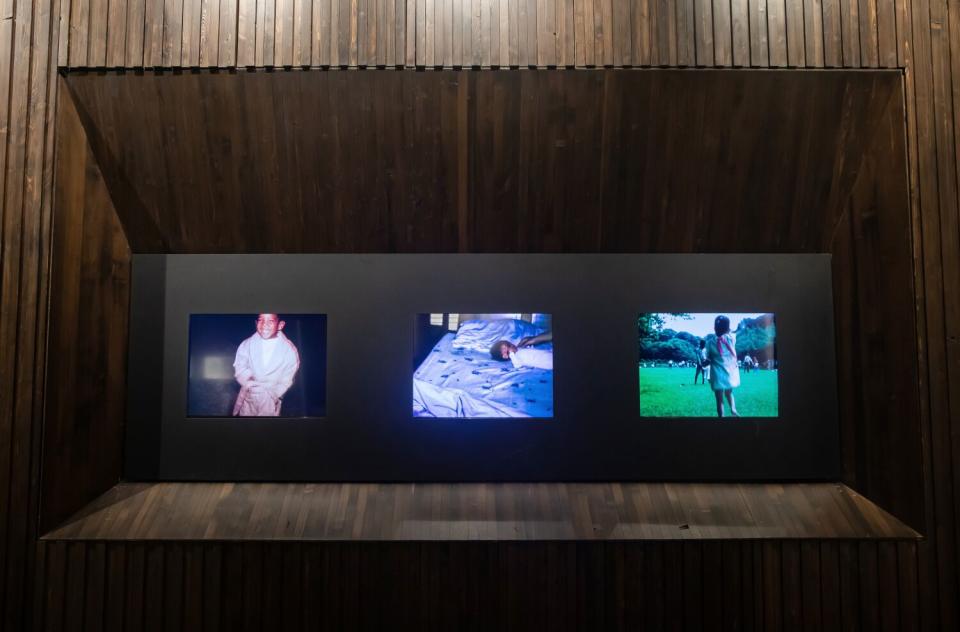
There are iconic works on view that Basquiat created, such as the figurative portrait “Cabeza” (1982) and an untitled black skull painting from 1983. Rare pieces include “Dry Cell” (1988), which the family believes to be the last painting Basquiat ever made. The artist gave it to his father, who had been admiring the work when the canvas was still wet. It's especially poignant, considering the two had at first clashed over the artist's unconventional career path.
Basquiat, whose father was a Haitian immigrant and mother was of Puerto Rican descent, created art that spoke to issues of his era. But his voice is still very much relevant today, says Sarah Loyer, a curator at the Broad museum, which has deep Basquiat holdings. “He speaks to the topic of equity — not just racial equity, but market equities and financial equity as well as representation and visibility. And there’s a celebration of Black life that comes across — and that really resonates today.”
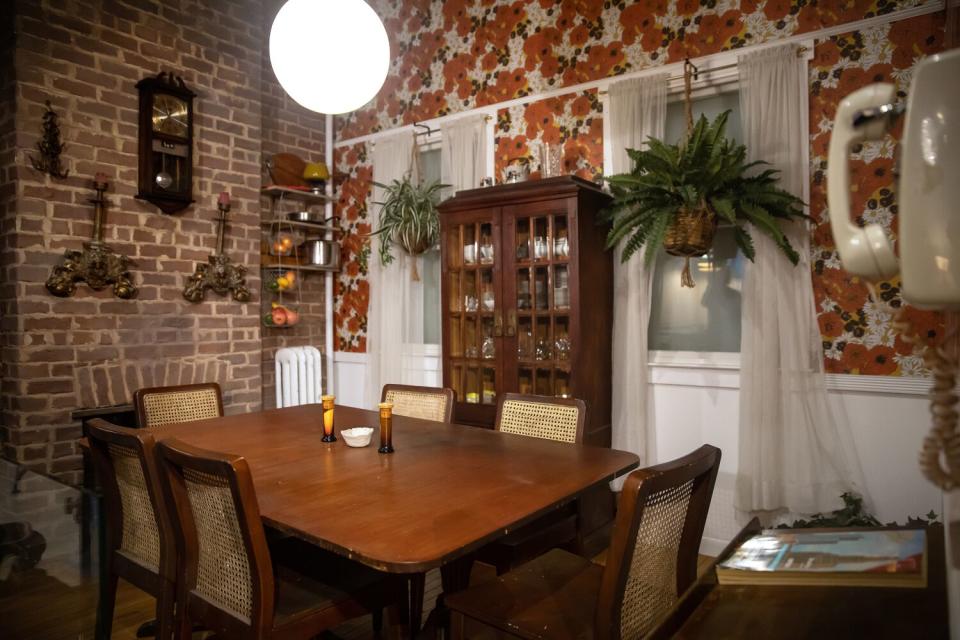
What’s unique about “King Pleasure,” however, are the immersive environments by architect David Adjaye, who designed Washington, D.C.’s National Museum of African American History and Culture. Adjaye re-created spaces from the Basquiat family home along with Basquiat’s last art studio in the East Village and the nearby Palladium nightclub, which Basquiat frequented. Visitors can wander through the club’s Michael Todd Room for VIPs, with its gold-hued wall and lounge seating. The two enormous murals Basquiat created for the club’s 1985 opening are on view there — they’ve never been shown outside the club before “King Pleasure.”
In the art studio, it feels as if Basquiat just slipped out the door. His Comme des Garçons trenchcoat hangs in one corner; a blue sparkly shirt he often deejayed in at nightclubs hangs in another.
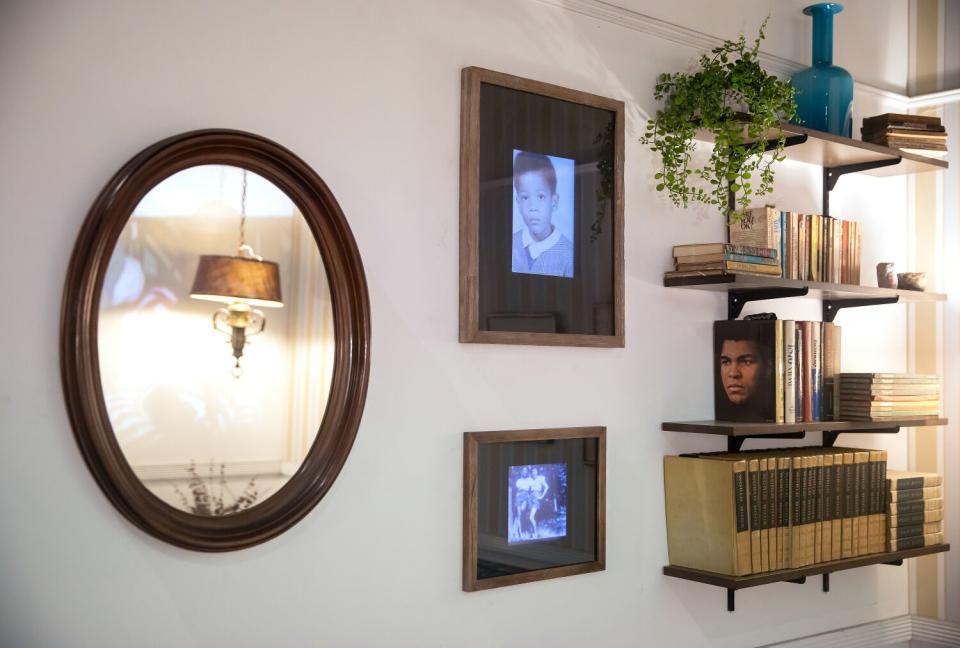
The living room space is filled with the family’s actual furniture and belongings. The Basquiat children’s now-yellowed Encyclopedia Britannica books rest on a shelf; their father’s stone ashtray sits on a mod-looking coffee table; and the home’s original thermostat — the object of many spirited family debates in the wintertime, Lisane says — is affixed to a wall.
“All of this, it’s part of the overall memory of being home with him,” says Lisane as she takes a seat on the ’70s-looking couch, with its geometric, earth-toned pattern. Behind her, towering projections of family photographs float across the living room wall.
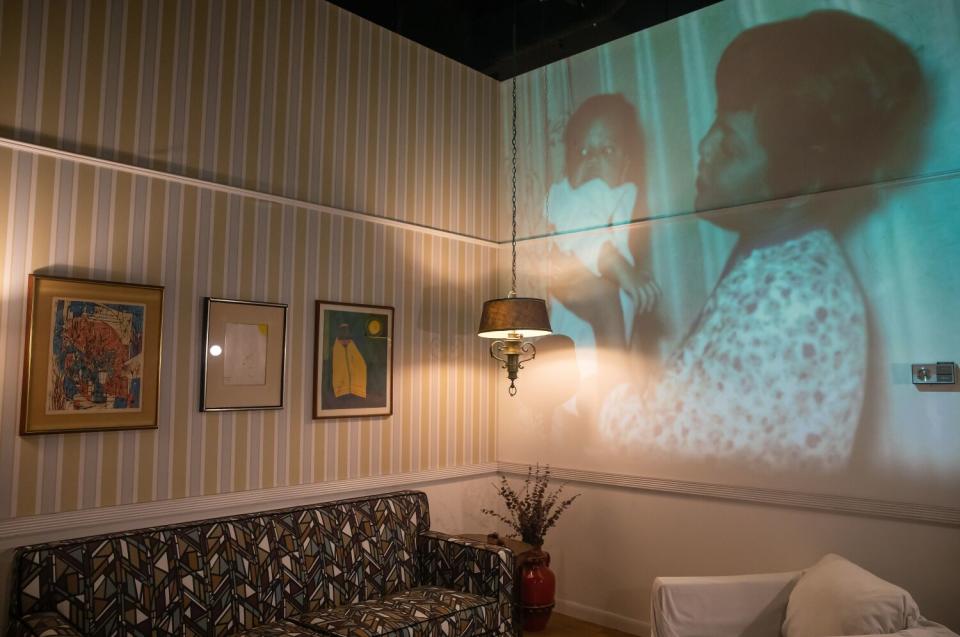
Heriveaux says her brother was always creative, even when playing childhood games. Once inspired by the movie “Mary Poppins,” he convinced her, when she was a toddler, to jump off an armoire with an open umbrella to see if she could fly. When the family lived in Puerto Rico from 1973 to 1977, then-teenage Basquiat would lather up the hallway floor with soap and water and the kids would foot-skate. “My dad was like, ‘Oh, you’re cleaning! Great,’” she recalls.
“We’re his family,” Heriveaux says. “So we understand the layers and complexity and the facets that made him the man that he became.”
Basquiat later came up as an artist with Keith Haring and Kenny Scharf, sold his first painting to Debbie Harry, palled around with Andy Warhol and walked the runway for fashion label Comme des Garçons in Paris in 1987. He became a celebrity, and his mystique was only accentuated by his short rise to fame and untimely death, from a heroin overdose, at age 27.
These days, Basquiat fever is still spiking. Across the street from the Grand LA, the Broad museum is featuring an exhibition of 12 Basquiat works from its collection — all of its Basquiat holdings minus one, which is on loan — and the show has been immensely popular, the museum says. The artist is just as in demand commercially: in 2017, Basquiat’s skull painting, “Untitled” (1982), broke auction records when it sold for $110.5 million at Sotheby’s.
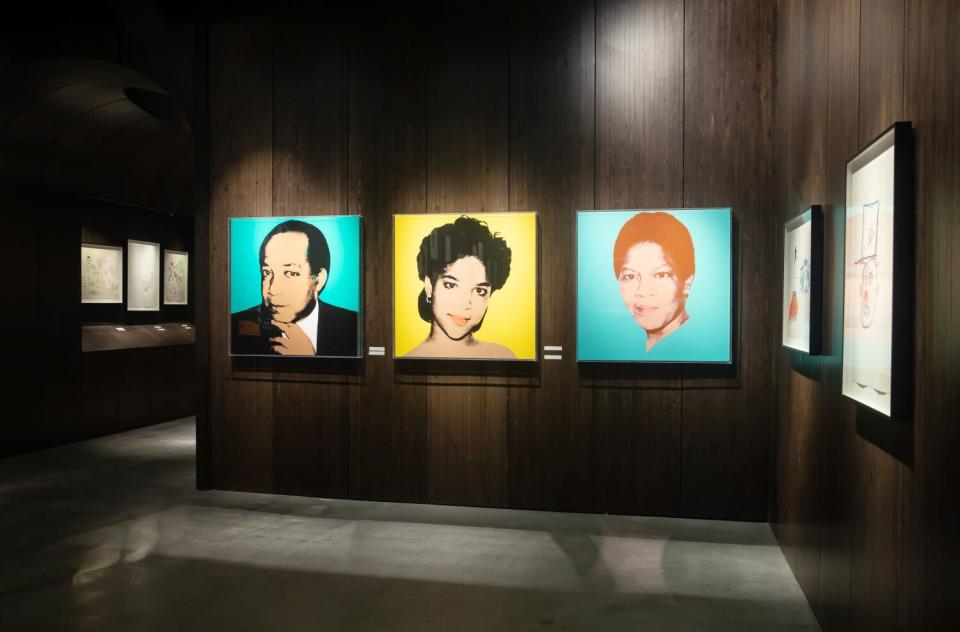
Outside the exhibition, a towering portrait of the artist overlooks Grand Avenue. Weekday general admission to "King Pleasure" is $32, weekends, $35 (there are less expensive tickets for students and seniors). The gift shop (a.k.a. the “King Pleasure Emporium”) is open to anyone, even without a ticket. The show was a hit in New York, with more than 210,000 visitors in just shy of nine months.
The location is high profile, as well. The exhibition is the inaugural showing at the Grand LA, a mixed-use complex from Related Companies across the street from Walt Disney Concert Hall. The Gehry-designed compound includes hotel and residential towers — both of which opened in July 2022 — along with spaces, in the public plaza, for restaurants, retail and entertainment. Four of them house “King Pleasure.”
That the exhibition is situated downtown makes sense, Lisane and Heriveaux say. Basquiat was always at the center of intersecting creative communities. They say the the Grand LA was also a nontraditional venue that offered “texture” and which, practically speaking, had walls large enough to accommodate Basquiat’s often enormous canvases. One of the Palladium murals, “Nu Nile” (1985), is more than 41 feet wide.
Regarding commerciality, Lisane says that in order for Basquiat's family to “own the narrative,” the estate paid for everything out of pocket — insurance, shipping, venue rental, exhibition design, construction, video production, staffing and other costs — and didn’t apply for grant funding. Sponsors will help cover a mix of free and ticketed programming, still in development. Nothing in the exhibition is for sale, but Lisane and Heriveaux will eventually take a salary for more than two years of full-time work invested, they say.
“With social media, it’s very easy to have an opinion,” Lisane says. “People have made comments about licensing or ‘Why isn’t it free?’ It takes money to do something like this. It takes money to ensure Jean-Michel’s legacy is protected — and ultimately, that’s what we’re doing.”
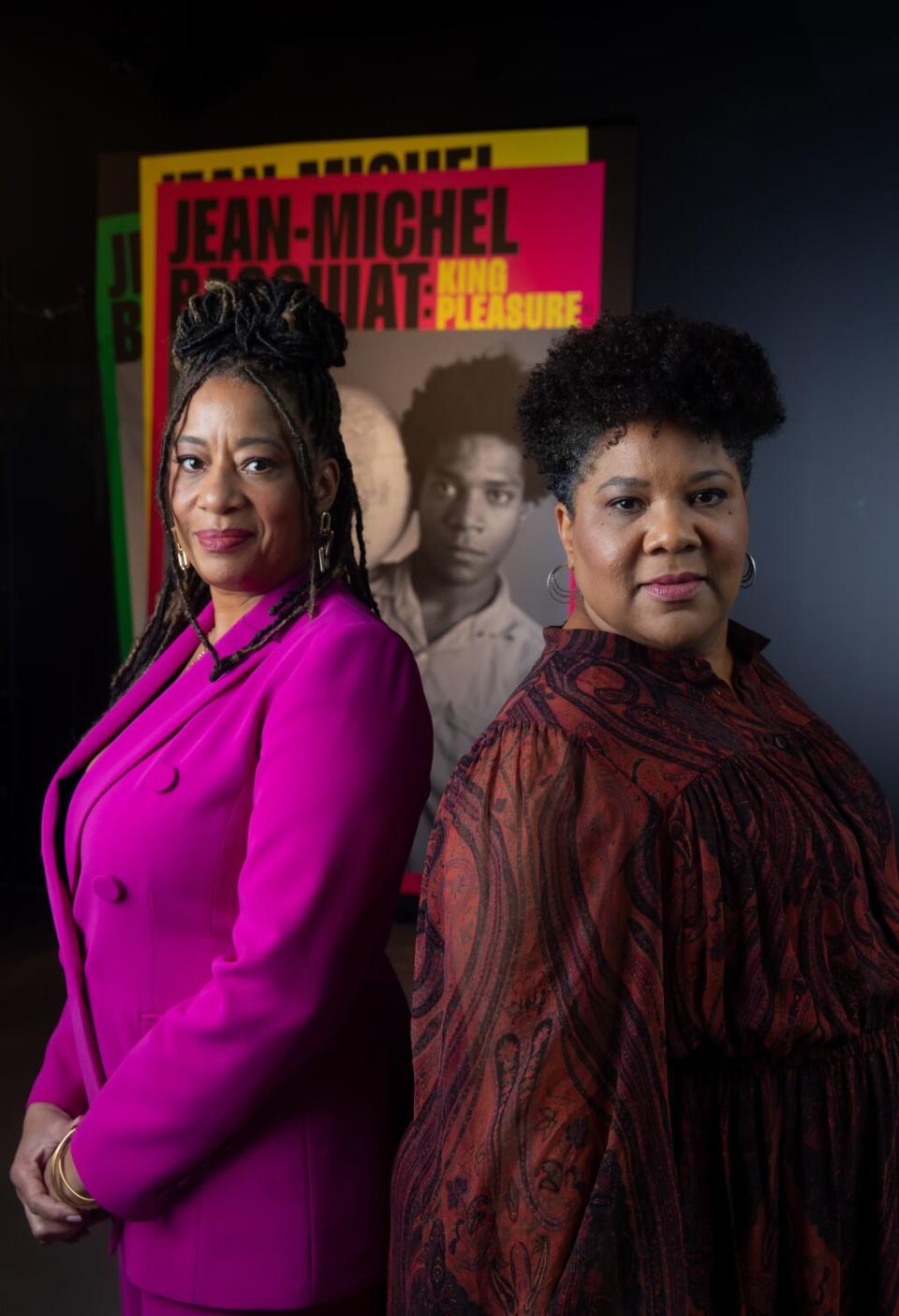
Lisane, Heriveaux and Fitzpatrick had been talking about creating an exhibition since 2017, but during the summer of 2020 they sprung into action.
“With all the things that were going on with the pandemic and politics, with all the murders and killings that were happening — of George Floyd, Breonna Taylor — we felt it was the right time to do it,” Heriveaux says. “Because he had a lot to say. His paintings had a lot to say.”
They spent hours on Zoom, whittling down thumbnails of Basquiat works, deciding what to exhibit. Sorting through his personal ephemera was an especially emotional experience.
“I was 21 at the time [he passed],” Heriveaux says, “and sifting through all of these items really took me back to that moment of processing losing him.”
“It was cathartic, actually,” Lisane adds.
The show is intended to be less of an institutional-style exhibition and more of a Basquiat experience. With insights about his life in L.A. scattered throughout.
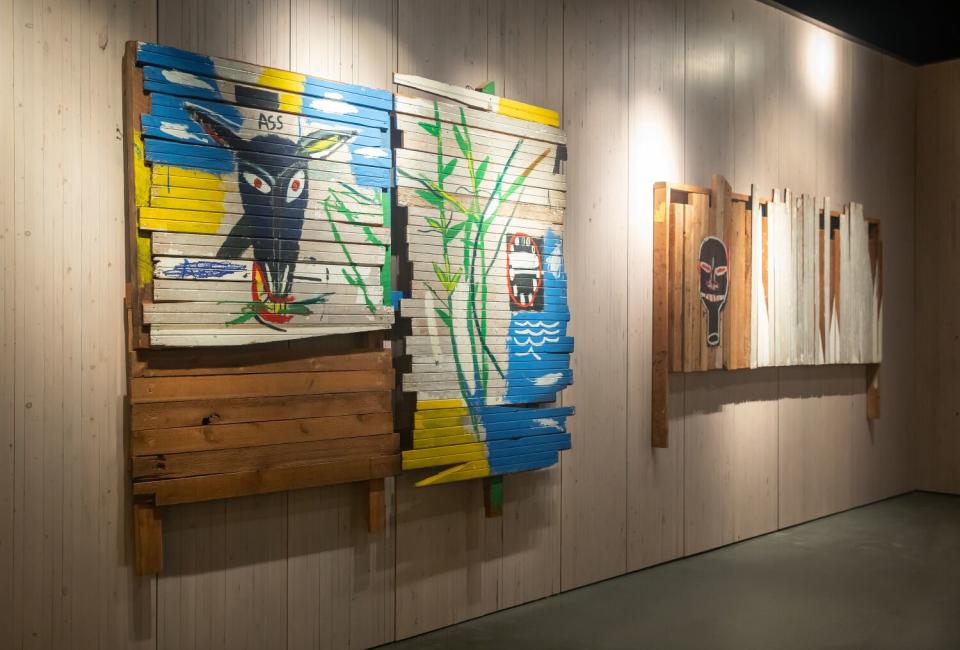
One work, “Hollywood Africans in Front of the Chinese Theater With Footprints of Movie Stars” (1983), depicts a trip Basquiat made to L.A. with rap musician and artist Rammellzee and painter Toxic. It addresses the entertainment industry’s marginalization of African Americans while also celebrating the artists’ arrival, as Black men, in Hollywood.
Two works from 1984, both called “Untitled,” are painted on what appears to be the wooden fence from the studio Basquiat leased a block from the Venice boardwalk. He had the slat fence removed and reconfigured it, turning it into supports for paintings. It was an important pivot in his work — when he got back to New York, he built new fence-like supports and made new works on them.
A more than 8-foot-tall mixed-media piece on view, “Tuxedo,” is an altered version of a silk-screen print, also called “Tuxedo,” that Basquiat produced in collaboration with L.A. art dealer, curator and art historian Fred Hoffman, now a leading Basquiat expert.
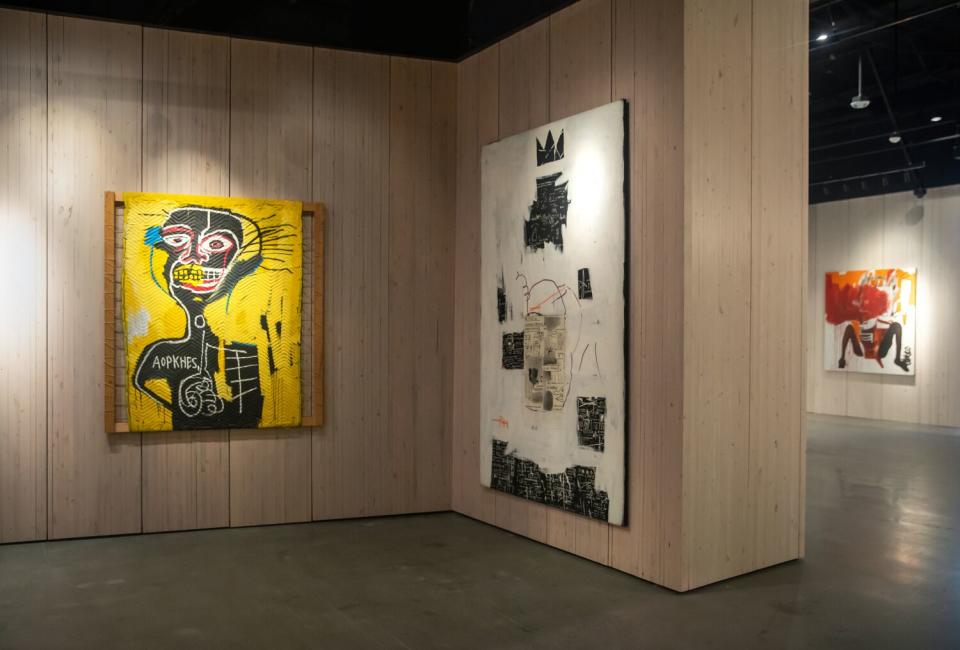
Hoffman recalls taking Basquiat and Madonna to lunch, in late 1982, at the commissary at 20th Century Fox. They sat in a VIP area, overlooking the dining room. “Madonna commented: ‘someday everyone in this room is gonna know who you and I are,’” Hoffman says. Basquiat? “He smiled and visibly blushed.”
Gagosian says Basquiat loved riding his bike around Venice and eating lunch at Mr. Chow in Beverly Hills. The artist produced "Portrait of Michael Chow" in 1985.
Basquiat visited Robert Rauschenberg six or seven times while Rauschenberg was making prints at Gemini G.E.L. on Melrose Avenue. in the early ’80s, says Gemini co-founder Sidney Felsen. Their interactions inspired Basquiat’s more abstract drawings at the time.
He also spent time with Eli and Edythe Broad, who were early supporters of his work, acquiring all 13 pieces in the artist’s lifetime. They visited Basquiat at his New York studio early on, and they invited him to their house in L.A.
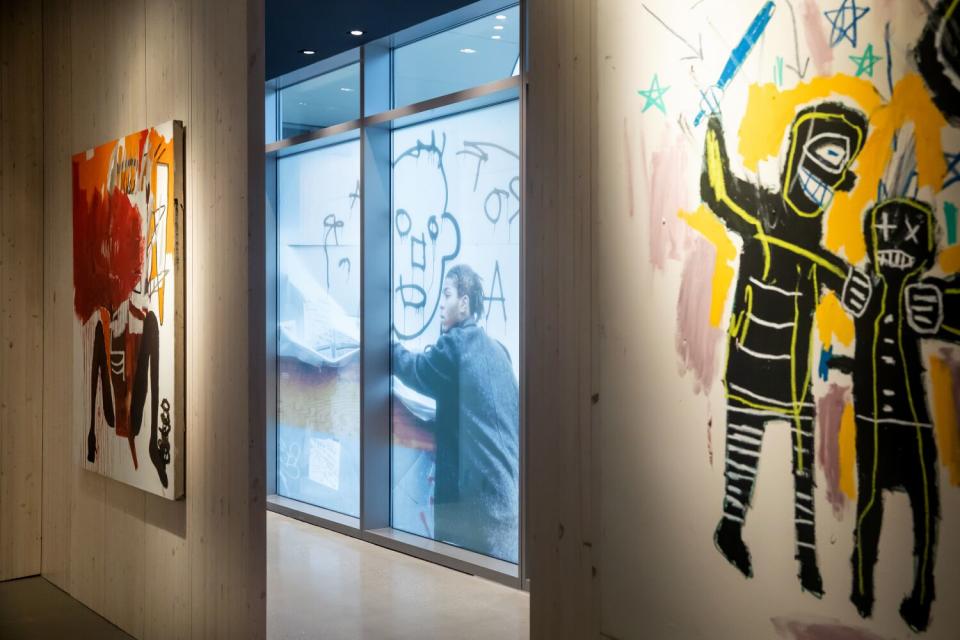
Filmmaker Tamra Davis, one of Basquiat’s first friends in L.A. and the writer-director of the 2010 documentary “Jean-Michel Basquiat: The Radiant Child,” says Basquiat “re-created himself in L.A.” “It was a new town and nobody really knew him here, so he could be more free. That’s why he painted so much here.”
Gallerist Jeffrey Deitch, who wrote about Basquiat for “Art in America” in 1980 and delivered his eulogy in 1988, says the artist’s L.A. work reflects his environment. “The works made in L.A. were more open and colorful,” Deitch says. “I think he was influenced by the light and space in Los Angeles.”
As installation of the exhibit nears completion, Lisane and Heriveaux survey one of the galleries. They each hold back tears.
“I’d like to think these are the works that had special meaning for him,” Heriveaux says of the estate’s collection. “Which is why he chose to keep them.”
This story originally appeared in Los Angeles Times.

